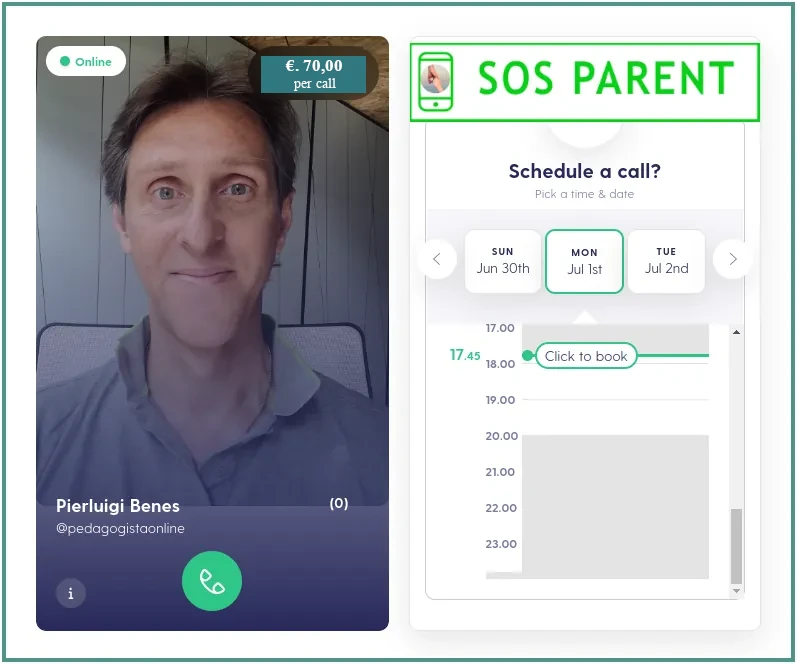
Your child is struggling with a math assignment that’s too difficult. When you ask them what’s so complicated about the problem, it seems they haven’t even read the text properly.
Your child does not lack abilities; they are intuitive, but their performance at school is inconsistent and teachers are unsure what to make of it, often finding them easily distracted. Their behavior in sports and games is also inconsistent – they either do well or get frustrated and give up.
But school is the most challenging area, as there seem to be learning difficulties. Math is a real stumbling block, but they also struggle with summaries, and even reading is not well-developed, as they tend to read even simple texts rather roughly. However, they do understand what they read, although their reconstruction of the text is somewhat confused in terms of the order of events. In other situations, however, they are very bright; often they are able to anticipate their classmates’ responses and show remarkable abilities.
So why does your child have these learning difficulties? Why can’t they always learn as they should? In children with learning difficulties, such discontinuous concentration is the cause of the problem, or is it the effect of something else? You have probably asked yourself these questions several times about your child, and you would like to know more. If so, it may be helpful for you to keep reading, as you will discover how to help your child overcome these difficulties. I will offer you the opportunity to take the helm on the topic of learning.
1. Learning difficulties: is your child just lazy?
It is difficult for a parent to know how to handle situations like the one described above, where there are learning difficulties at school but also clear abilities. It’s often very challenging to motivate a child like this to study; many times it seems that the parent has to act as the teacher at home, because it appears that no one has explained those things to the child. Actually, the topic has been covered at school, and the necessary exercises have been done; but sometimes the child assimilates them very well, and other times inadequately.
If you suspect that your child is just having tantrums, you might think of leaving him alone to do his homework, but you realize that the work at home is too much for him; he might be able to do it, but it often takes him a long time. And so, at home you are often forced to study with him for hours and hours or to push him to finish his assignments; a task that often drains resources from him, but also from you and your partner.
In the long run, this situation irritates everyone and leaves traces even in the things you do after homework and studying; because the tension accumulated before needs time to be released. Especially since his wavering attitude pushes you to question his commitment and see him as a lazy child. In reality, it’s not like that at all, as you will discover in a moment.
2. Do they have a learning disability?
I have seen many children with general learning difficulties who have often been referred to health services for evaluation, only to find that they did not have any disorder. This also happens with teenagers, where typical issues of adolescence complicate matters. This occurs frequently, especially with children at the beginning of their school years, because the situation is still very uncertain, and the services struggle to make a diagnosis.
Many times, sending them for diagnosis is not necessary, as to a careful observer it is clear that there is no disease. Perhaps the child only needs to mature. Do they read poorly, or do they have dyslexia? These are two quite different things. Are they lively or hyperactive? Here too, two extremely different situations. Are they autistic or aphasic?
Health services seldom make a diagnosis in the early years of primary school. However, for you as a parent or a teacher, the problem remains, and one or two years of waiting for targeted intervention can change many things. Sometimes, the pressure of school on families forces them to seek services more insistently and push for certification of some disorder.
The most emblematic case in Italy is that of dyslexia, as noted by some surveys that highlight the disproportionate reporting of children with learning disorders that they do not actually have. This has led to these children being included in inappropriate treatment programs or being diverted from more suitable treatments. This occurs because with some types of difficulties, it is not possible to say in a simplistic way whether there are clear disorders or not, especially in borderline cases, situations that lie between a normal situation and a disorder.
3. The lever to effectively interact with the child and their learning difficulties
a. What are learning difficulties
I’m not pushing you to seek a diagnosis as soon as possible, nor I’m urging you to underestimate it; I’m raising your awareness that for children with learning difficulties, there is no need to wait for a certification or chase after it in order to give them the proper conditions to grow. You can educate a child’s learning regardless of any disorder they may have; because for this, a diagnosis is not necessary, but simply an understanding of the ways in which their difficulty/disorder is expressed.
If you’re wondering what learning difficulties are, you have to know that the cases are very broad, including dyslexia, dysgraphia, and dyscalculia, which are known as specific learning disorders (SLDs), but they also include other disorders that may affect learning; for example, think of hyperactivity, which significantly affects learning opportunities. Recognizing learning difficulties is an even broader chapter. Therefore, don’t focus on this, because you’re not in a position to evaluate it right now; what you can do from the very beginning, however, is to manage the difficulty, with criteria.
b. The lever to interact effectively
From a pedagogical point of view, in fact, it doesn’t matters so much to give a name to this difficulty; what matters is describing the way in which it is expressed in the child’s here and now, taking into consideration as many areas as possible of their personality. The child described at the beginning is an intelligent and sensitive child who is able in many circumstances to express himself at his best, but most of the time he fails the tests he undertakes: at school and outside of it. It is quite evident that this difficulty in succeeding, even in fun things like play and sports, is the cause of his laziness, rather than the effect.
Therefore, if his sense of efficacy is not addressed, it is very difficult for him to experience the pleasure of engaging in everyday activities, especially the less stimulating ones; and if this is not done as soon as possible, he continues to live this peculiarity badly, often also experiencing feelings of anger or envy for not being able to reach the level that he considers within his reach. Increasing the child’s perceived sense of efficacy is the main lever for helping them overcome the difficulties they encounter. Now I’ll explain how to do it.
4. The four fundamental strategies to overcome learning difficulties
If a similar situation involves you as a parent, or if you are wondering how to help children with learning difficulties, now I will show you some useful strategies to promote learning in children and to give them the opportunity to finally begin to perceive themselves as effective in the activities they carry out.
1a. Math: What does it require?
I start from here, because children with learning difficulties encounter one of the toughest challenges in the logical-mathematical area, particularly when it comes to math problems. A math problem presents several levels of difficulty: there is text, there are data, there are demands, and it is necessary to use that data to arrive at a solution. Therefore, a problem requires numerous skills, no matter how simple it may be:
- One must be able to read, in the sense of having a good reading ability, which allows full understanding of the task’s instructions.
- One must have a decent writing ability to immediately translate logical processes into a written form that is clear and understandable upon re-reading.
It is necessary to have a good ability to sequence the various elements of the problem (explicit data, missing data, intermediate questions, final solution). - Last but not least, an appropriate level of maturity is required for the complexity of the task.
As you can see, you needs many different skills: reading, writing, logic, and developing the necessary structures (intellectual, cognitive, etc.). If any of these abilities encounter difficulty, it is clear that the entire process will suffer; however, the same thing happens even if the individual skills are adequate but there is a lack of “order” in how they are carried out. In fact, a rather frequent problem for some children is not being able to put things in order; imagine when it comes to combining many skills together to solve a complex problem.
1b. Math: What to do?
We don’t care now why this happens, but we care to understand it and, starting from this, to be able to find an effective solution to their difficulty so that they can face tasks and activities that concern them serenely, starting to discover themselves as skillful and effective. Therefore, what you can do in this case is to act as follows:
- Make him reread the text of the problem several times. You have noticed that he has grasped that many times he manages to solve problems; so give him time, tell him to read it two or three times, and tell him to do it as he prefers, out loud, quietly, or in his mind.
- Now ask him to extract the data and isolate the question.
- If the problem is more complex, for example, if there is missing data or intermediate questions, verbalize the particular difficulty of the problem to him; he has realized the greater difficulty, so you confirm this perception. Then, together with him, break down the problem into sub-problems: first the data and the initial question, then the data and the intermediate question, then the data and the final question.
By doing this, you help him put things in sequence, allowing him to run the engine of his mind at the right speed. He will perceive himself as more effective and will be induced to seek the pleasure of that success; and being intelligent, he will easily acquire that method, making it his own.
2. Thought
Like a math problem, all other forms in which thought is expressed, such as intelligence and cognitive processes, suffer from the difficulty of putting things in order. There is a tool that can strengthen thought, that is language. In fact, you can use language to promote logical processes in all their forms in children.
For example, think about difficulties with summary; a very simple exercise to stimulate children to produce it is to have them tell about their everyday experiences, like a game, a trip, a sports encounter, and then ask them to summarize out loud the chronological sequence of events. You can also have them go backward, from end to beginning, or reformulate it with other words, enriching the sentence with other contents.
This game can be played for every new experience that particularly excites the child because it is a topic they are highly motivated to talk about and they already possess the things to tell; they just need to find the best way to put them in the right order.
Furthermore, it’s not necessary to sit down at a table to do it as if it were a task; it is much more stimulating to ask the child to tell the episode in scraps of time, in the car while driving to a sports activity, in the evening while watching TV, etc.
3. Motor skills
Thought and movement are two closely intertwined aspects, and here too, language has an astonishing ability to influence them. What I suggest you do is play with your child a lot: move, run, play with a ball, throw it to each other with your hands or feet.
Take, for example, a light ball. You can play by throwing it to each other with your hands and counting out loud; every time someone drops the ball, that person takes a letter from a word (when I was a kid, we used the word “donkey”; but you can certainly find a more fun word). The first to complete the word has lost.
Then you can start with a more difficult pass, for example, with one hand only, or counting backward, or doing both things together; but you can complicate it even more, keeping one foot up or one eye closed. In short, anything that makes the game more complex and develops their abilities is good.
It may seem like a trivial thing, but this helps a lot to organize movements and thoughts, and it doesn’t cost anything.
4. Motivation
I will never tire of saying that motivation is the engine of a person’s development. If a child’s motivation to grow or learn is not constantly nourished, the process slows down a lot.
That’s why it’s important that you do everything you can to keep your child’s motivation to engage always high, so you maintain the most positive image of themselves that your children can develop intact and thriving.
This doesn’t just mean spurring them on and encouraging them in words; it means creating the conditions for them to discover their effectiveness. And the best way to do that is to progressively work on the Zone of Proximal Development, giving them progressively richer stimuli.
Conclusions
Now that you have discovered how to help your children increase their learning opportunities and reduce their difficulties, you have the opportunity to make them more confident in facing everyday school tasks.
Perhaps at first, it may seem challenging to take care of these aspects correctly and systematically, but you will see that with a little practice, everything will become automatic.
What will urge you to get more involved in all this will be the effects that these strategies will generate in your children, who will understand that you are there by their side to help them read better inside themselves, and from this, they will certainly draw the energy to overcome the difficulties they currently face.
If you’re looking for answers to other doubts about your educational practice, usefull to stop getting frustrated with your child and avoid some of the most insidious mistakes a parent can make, I suggest you download the ebook that I’m making available to you for free.





